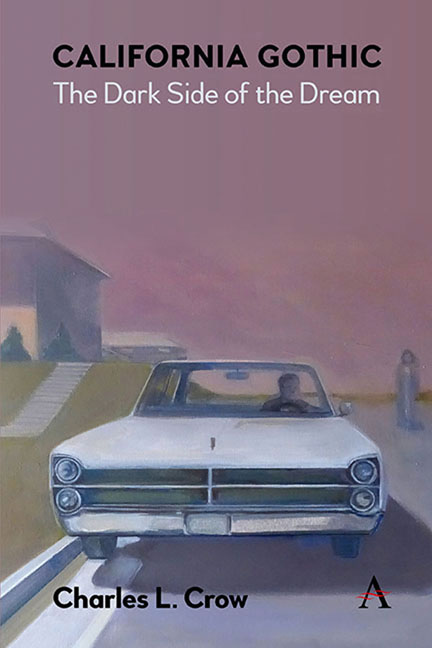Book contents
- Frontmatter
- Dedication
- Contents
- List of Figures
- Preface
- Acknowledgements
- 1 The Magic Island
- 2 Ambrose Bierce and San Francisco’s Gothic Frontier
- 3 Lost Coasts
- 4 Disease, Pandemics, and the Monstrous
- 5 The Shadow Line: Noir and California Gothic
- 6 California Ecogothic: What’s Buried in the Basement
- Works Cited
- Afterword
- Index
Preface
Published online by Cambridge University Press: 27 March 2024
- Frontmatter
- Dedication
- Contents
- List of Figures
- Preface
- Acknowledgements
- 1 The Magic Island
- 2 Ambrose Bierce and San Francisco’s Gothic Frontier
- 3 Lost Coasts
- 4 Disease, Pandemics, and the Monstrous
- 5 The Shadow Line: Noir and California Gothic
- 6 California Ecogothic: What’s Buried in the Basement
- Works Cited
- Afterword
- Index
Summary
California, the land of perpetual sunshine, might seem the least Gothic of American regions. Where are the “deep and gloomy wrongs” (in Hawthorne’s phrase) that are obviously part of New England’s heritage or that of the South? New England’s witchcraft trials, its isolated villages, and its brutal winters are obviously the stuff of the Gothic. The South has the legacy of slavery and its aftermath, its tangled racial bloodlines, swamps, crumbling mansions, and the legend of the Lost Cause, all of which have nourished some of the most profound and disturbing American literature, much of it Gothic.
Instead, the Golden State has the California Dream. This complex of ideas and aspirations needs to be unpacked and has historical roots that anticipate the European discovery of North America. For Americans from the nineteenth century to the present, the dream has evolved continuously, as documented by Kevin Starr’s magisterial eight-volume history. The California Dream has meant a variation on the American Dream, restated with urgency, since, as Joan Didion observed, “things had better work here, because here … is where we run out of continent” (p. 172). At a minimum, it evokes an aspiration to begin again and live a fulfilling life in a welcoming climate and landscape. Obviously, the California Dream is now threatened by ecological disaster and global pandemics, both of which were long anticipated by California authors, as well as the failure of its inhabitants to become worthy of its landscape.
The contention of this book is that the California Dream is also a source of the Gothic, like the myth of the Old South, and that the California Gothic has much to say about the situation of America and the world. We need to explore this complex idea and see what was left out as it was constructed. The California dream has required the suppression of other narratives, and these alternate realities and lost stories, in the nature of the suppressed, return as the uncanny nightmares of the California Gothic.
Californians built their civilization in the space of a few decades in places where “they shouldn’t have” (p. 3), as Marc Reisner reminds us: in earthquake zones, on the interface with wild lands subject to fire, and far from fresh water. The landscape has been both inspiring and threatening.
- Type
- Chapter
- Information
- California GothicThe Dark Side of the Dream, pp. xi - xivPublisher: Anthem PressPrint publication year: 2024

